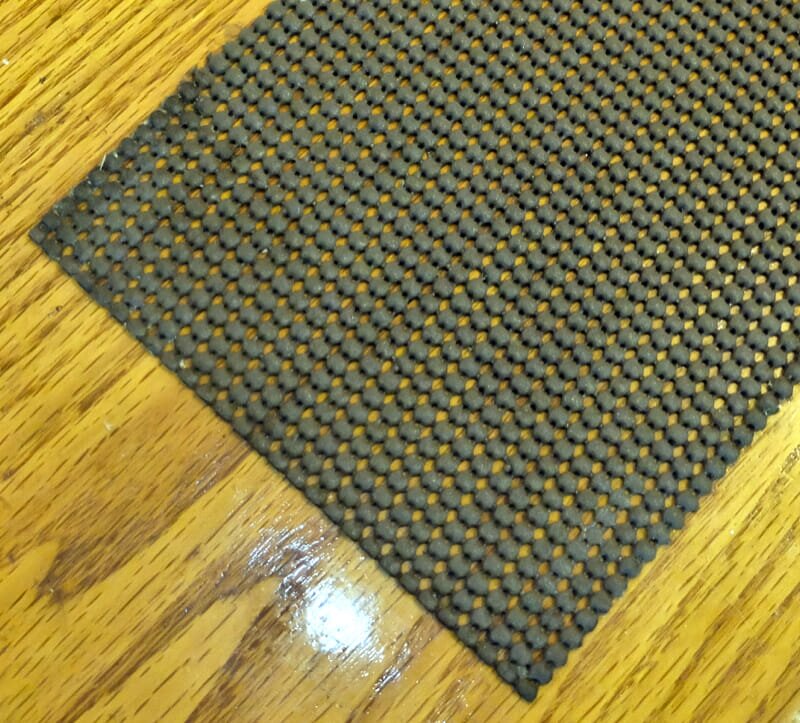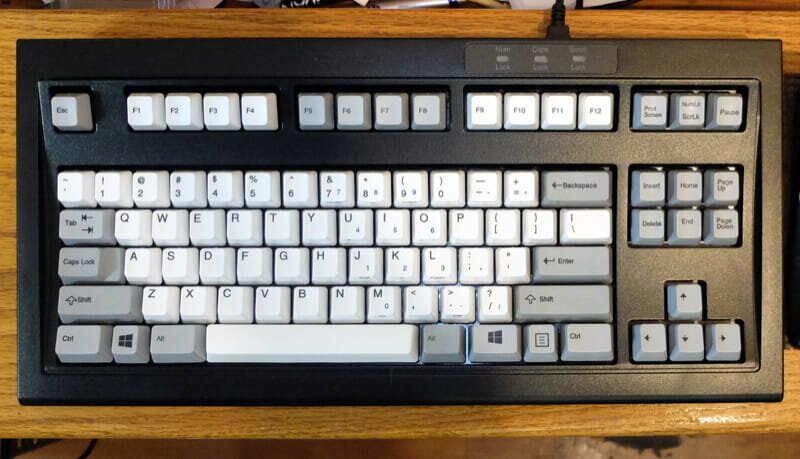
In my elementary school, we weren’t given grades of A B C D F as was the standard before and since. Instead, New Haven R-II school employed a different set of letters that meant the same thing. They were E S M I F. I have no idea how this came to pass, but I hope it was because some person seeking a doctorate in education realized that his dissertation was due tomorrow and he had nothing. Frankly, I could get behind that kind of education theory. Beats modern pedagogy, anyway.
Which has nothing to do with the content of this column. I just needed it to make the headline work.
You would have to call on both grading systems to come up with the initials of the International Business Machines Corporation, known to most of us as IBM. I’ve dealt with IBM in one way or another for about 40 years, and over that time one overarching truth has emerged: IBM made fine hardware but its software and services are M-grade.
(The company sold its personal computer company to the Chinese company Lenovo in 2005. My comments as to quality here apply only to items made before that sale.)
IBM employed engineers, real engineers, the kind who would get into shouting matches over which solution to a problem was more elegant, and it showed in the company’s products.
Elegant is indeed the right word. The 1986 IBM PC Convertible is actually part of the Architecture and Design collection at the Art Institute of Chicago. When you opened it by lifting its screen, the gorgeous mechanical keyboard and floppy drives lifted up to what the engineers had calculated was the ideal angle. It was beautifully and precisely made, in an era when “laptop” computers were commonly referred to as “luggable.”
There were attachments that could be installed inside the machine, such as a modem, or bolted to the back, such as a printer. You could lift off the screen and plug it into a computer monitor instead. I remember it selling for around $2000, which was cheap for the day.
Then the code — software and firmware — guys got involved. For some reason, the PC Convertible’s modem was not Hayes compatible. If you’re old enough you’ll remember how important this was. It was enough to dissuade me from buying one, though later, when they could be had off-lease for $250, I was sorely tempted. I’d be tempted even today, just for the keyboard.
IBM keyboards were always the best. The one on the Convertible, known to friends as the Model 5140, was better than that on any fold-up computer before or since. It was a real mechanical keyboard. I asked around and was told that it used Alps switches.
Today, as I’ve mentioned earlier, IBM keyboards are those by which others are measured and fall short. The absolute classic is the Model M, with its distinctive feel and sound. It is the keyboard that established the placement of keys on personal computer keyboards. Many are in use even today, and they often sell for more, sometimes far more, than they did originally.
But there was an IBM keyboard that came earlier, a kind of holy grail among devices for entering letters and numbers into a computer. It was IBM’s Model F. It is said to have been better in every way. (Well except for one.) It was made in models for mainframe “big iron,” for banking applications, for various kiosk-run businesses, and so on. Very sturdy and very heavy, its typing feel was second to none, it is said. If you got an original IBM PC, in the early 1980s, a Model F is what came with it, so you’ve used one.

After my friend and colleague Tim Butler wrote last week about a Model M still in production, we got to talking and I got to looking for original Model Fs. They’re out there, but there are problems. First there is the price, because good ones are expensive. Second is that to work on a modern computer, its controller circuit and connecting hardware need to be changed. Third is the shortcoming I mentioned above: Many of the keys are not where you expect them to be. The supposedly incredible typing feel of the keys would come at the price of having basically to learn to type all over again — thereby also ruining you for any other keyboard you might use.
As a result of our conversation, I began to poke around to see if anyone still makes the Model F, the way Unicomp in Kentucky continues to make Model M keyboards, in the USA, as it once did for IBM. It turns out, someone is making Model F keyboards and you can buy one if you want.
As with Unicomp, ModelFKeyboards.com has an interesting story. I cannot do it justice here, but the founder/owner of the company tells it here, and if these things interest you you’ll find it gratifying.
The newly made Model Fs are built from scratch in China, rather than being built on original IBM machines in Kentucky. Without the head start of having the original factory the cost would have been prohibitive to try to make them here. Even as it is, the Brand New Model F keyboards are expensive. Some improvements were made in key positioning and enabling them to work on modern computers, problems Unicomp didn’t face.
(I should mention that you can pay even more, $500 and higher, for modern boutique “gamer” keyboards. They do not seem to be especially good, but they are fine for impressing your friends and demonstrating that you have more dollars than sense. What we’re talking about here is keyboards that are expensive because they’re great keyboards, not psychedelic light displays with built-in keyboards.)
I am not immune — indeed, am highly subject — to the human capacity to talk oneself into believing that something he wants to do is a good idea. Buying an expensive keyboard just to find out what using it feels like took even me a couple of days to rationalize.
I had a few concerns. For instance, though none of the reviews mentions it, I got the sense that the Brand New Model F keyboards come in pieces, with a bag of keys and related items, which the purchaser has to assemble himself. I asked around and yes, it turns out that this is true. That didn’t bother me as much as the lack of prominent mention of this fact on the company’s home page. A happy customer reported that 80 percent of the keys installed just fine, 15 percent took a little fiddling, and 5 percent were more troublesome because he lacked the necessary tools. On a keyboard with ~90 keys, that’s four or five keys that didn’t work without some effort. Right out of the box.
The company’s set-up video is music to the ears of people who like keyboards as an end unto themselves, and a free horror movie to those who just want a keyboard to use. Soldering irons are mentioned.
Nevertheless, I ordered one. And within a few hours I received a note from the founder/owner/forum moderator saying he was canceling my order because I’m not the kind of user for whom his keyboards are intended. He was right to do so. The Brand New Model F is a dandy project for members of the computer keyboard community, but not as much for someone who just wants an extremely good keyboard to use for, you know, typing. (I do think it would save misunderstandings if the company made it more prominent that its keyboards arrive in pieces and that if there’s a problem your recourse is limited to internet forums.) Sometimes the journey is as rewarding as the destination, but sometimes the destination is what one’s after.
All’s well that ends well, and I turned half the money I am to be refunded from the Model F to a Mini Model M, made by Unicomp. It is the compact version of the keyboard that Tim reviewed last week, for which he longed in an Apple version. I have a couple of the original IBM ones, the Space Saving Keyboard or SSK, which I coincidentally got from Unicomp in 2006. One is from 1993 and one is dated as refurbished in 2006. I believe both were made in the Unicomp factory when it was Lexmark (so named because it is in Lexington, Kentucky). They are both wonderful but also now so valuable that I’m hesitant to risk spilling coffee into one. (And how can a person write if flinging coffee all over the place is prohibited?)

Using new tooling, a few years ago they set out to perfect the SSK, a Model M without the number pad at the right side, and best I can tell they have done it. It went through some birthing pains, chiefly in the form of a sub-optimal controller board. The replacement board incorporates a Raspberry Pi Pico, a tiny controller chip. This means that, if you wanted to, you could remap the keys in any way you wanted by use of external software. I don’t, but for instance Tim, who was concerned over the lack of a small Model M for his Apple computer, might be able to set up one, and even get the appropriate keycaps from Unicomp.
Of more significance to me, the company has figured out how to do a USB-connected keyboard properly. It has a full-size USB-A connector on the keyboard, with a clip that holds it firmly in place. Others have used fragile mini-USB connectors or, worse, USB-C, which many of us are discovering are troublingly delicate.
Mine has white and gray keycaps. I wish Unicomp offered all-black ones, to match the keyboard’s case. They do, sort of, but those have nothing printed on them. The bright white keycaps I do have make them readily visible in low light, probably more than white-on-black ones would be. The letters — “legends” — are put on them using a method — dye sublimation — that makes it unlikely they’ll ever wear off. The keycap legends are great, with the exception of the Windows keys, which kind of stand out. I do not use Windows (and those who do should keep it their secret shame, seek forgiveness, and get Debian Linux so as to sin no more). I’ve inquired about blank replacement keys.
While it has that “new keyboard feel” — in my experience keyboards do need to settle in a bit — it feels as if the keys are slightly lighter to press than older IBM and Unicomp boards. This doesn’t matter a lot to me, but I’ve known people to complain that the Model M keyboards require too much effort. (Such people should be sentenced to spend a year using an old, ugly, black Smith-Corona manual typewriter.) I like the feel of the new Mini M, and its sound, too.
It does make me wonder: how difficult would it be for Unicomp’s factory to add a Model F line? They already have much of what would be needed. I’d pay extra (how much? Don’t know) for a keyboard like this one that employed the superior key switches of the Model F. I could see a joint venture between Unicomp and Joe, the fellow behind the Brand New Model F company, resulting in a couple of Model F keyboard models, the standard one with the number pad and an SSK variant, which might sell in numbers great enough to justify the investment. Many of us would rather have a keyboard made in Kentucky than one made in China. Much is made of the great weight of the Model F. The Mini M weights two or three times as much as the modern boutique keyboards, which to me is sufficient.
In any case, the grading standards seem to have failed. I tried to get an F, but I ended up with an M. Which should make me happy, and in large measure it does. Still, I’d love to try a Model F, but one that arrives put together, the way IBM intended.

Dennis E. Powell is crackpot-at-large at Open for Business. Powell was a reporter in New York and elsewhere before moving to Ohio, where he has (mostly) recovered. You can reach him at dep@drippingwithirony.com.
You need to be logged in if you wish to comment on this article. Sign in or sign up here.
Join the Conversation
Amplification/correction
The move to the Raspberry Pi Pico controller turns out to have been only temporary. Says Troy Fletcher from Unicomp: “No, we used the Cypress part for many years, but during 2020 we were not able to source them and we switched to another controller. After a couple years, the original Cypress part became available again, and we resumed using them as the primary controller for all our keyboards.” So unless the original controller has become reprogrammable, which was not previously the case, that possibility existed for only a short time.
Re: I Got an M, Not an F
Though I should add that despite the absence of that useful feature it is still a fine keyboard.